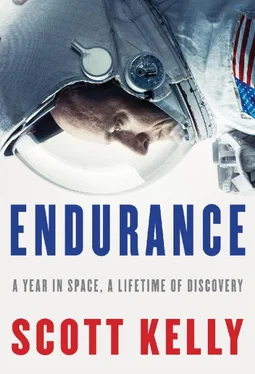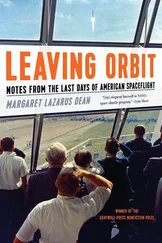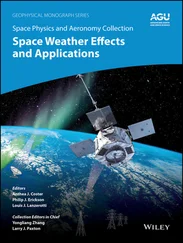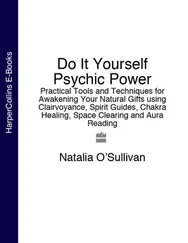The activation of the launch escape system wakes us up with a loud thunk. The escape system is a separate rocket connected to the top of the spacecraft, much like the one on the old Apollo/Saturn that was designed to pull the capsule free in case of an explosion on the pad or a failure during launch. (The Soyuz escape rocket was used once, saving two cosmonauts from a fireball, in 1983.) The fuel and oxidizer turbo pumps spin up to speed with a screaming whine—they will feed massive amounts of liquid oxygen and kerosene to the engines during ascent.
Russian mission control warns us it’s one minute to launch. On an American spacecraft, we would already know because we’d see the countdown clock ticking backward toward zero. Unlike NASA, the Russians don’t feel the drama of the countdown is necessary. On the space shuttle, I never knew whether I was really going to space that day until I felt the solid rocket boosters light under me; there were always more scrubs than launches. On Soyuz, there is no question. The Russians haven’t scrubbed a launch after the crew was strapped in since 1969.
“ My gotovy, ” Gennady responds into his headset. We are ready.
“ Zazhiganiye, ” mission control says. Ignition.
The rocket engines of the first stage roar to full capacity. We sit rumbling on the launchpad for a few seconds, vibrating with the engines’ power—we need to burn off some of the propellant to become light enough to lift off. Then our seats push hard into our backs. Some astronauts use the term “kick in the pants” to describe this moment. The slam of acceleration—going from still to the speed of sound in a minute—is heart pounding and addictive, and there is no question that we are going straight up.
It’s night, but we wouldn’t be able to see anything out our windows even if it were broad daylight. The capsule is encased in a metal cylinder, called a fairing, which protects it from aerodynamic stress until we are out of the atmosphere. Inside, it’s dark and loud and we are sweaty in our Sokol suits. My visor fogs up, and I have trouble reading my checklist.
The four strap-on boosters of four engines each fall away smoothly after two minutes, leaving the four remaining engines of the second stage to push us into space. As we accelerate to three times the Earth’s gravity, the crushing force smashes me into my seat and makes it difficult to breathe.
Gennady reports to the control center that we are all feeling fine and reads off data from the monitors. My knees hurt, but the excitement of launch has masked the pain some. The second-stage rockets fire for three minutes, and as we are feeling their thrust, the fairing is jettisoned away from us in two pieces by explosive charges. We can see outside for the first time. I look out the window at my elbow, but I see only the same black we launched into.
Suddenly, we are thrown forward against our straps, then slammed back into our seats. The second stage has finished, and the third stage has taken over. After the violence of staging, we feel some roll oscillations, a mild sensation of rocking back and forth, which isn’t alarming. Then the last engine cuts off with a bang and there is a jolt, like a minor car crash. Then nothing.
Our zero-g talisman, a stuffed snowman belonging to Gennady’s youngest daughter, floats on a string. We are in weightlessness. This is the moment we call MECO, pronounced “mee-ko,” which stands for “main engine cutoff.” It’s always a shock. The spacecraft is now in orbit around the Earth. After having been subjected to such strong and strange forces, the sudden quiet and stillness feel unnatural.
We smile at one another and reach up for a three-handed high-five, happy to have survived this far. We won’t feel the weight of gravity again for a very long time.
Something seems out of the ordinary, and after a bit I realize what it is. “There’s no debris,” I point out to Gennady and Misha, and they agree it’s strange. Usually MECO reveals what junk has been lurking in the spacecraft, held in their hiding places by gravity—random tiny nuts and bolts, staples, metal shavings, plastic flotsam, hairs, dust—what we call foreign object debris, and of course NASA has an acronym for it: FOD. There were people at the Kennedy Space Center whose entire job was to keep this stuff out of the space shuttles. Having spent time in the hangar where the Soyuz spacecraft are maintained and prepared for flight, and having observed that it’s not very clean compared to the space shuttle’s Orbiter Processing Facility, I’m impressed that the Russians have somehow maintained a high standard of FOD avoidance.
The Soyuz solar arrays unfurl themselves from the sides of the instrumentation module, and the antennas are deployed. We are now a fully functional spacecraft in orbit. It’s a relief, but only briefly.
We open our helmets. The fan noise and pump noise blending together are so loud we have trouble hearing one another. I had remembered this about my previous mission to the ISS, of course, but still I can’t believe it’s so noisy. I can’t believe I’ll ever get used to it.
“I realized a few minutes ago, Misha,” I say, “that our lives without noise have ceased to exist.”
“Guys,” Gennady says. “ Tselyi god! ” An entire year!
“ Ne napominai, Gena, ” answers Misha. Gena, don’t remind me.
“ Vy geroi blya. ” You’re freaking heroes.
“Yep,” Misha agrees. “Totally screwed.”
Now we are in the rendezvous stage. Joining two objects in two different orbits traveling at different speeds (in this case, the Soyuz and the ISS) is a long process. It’s one we understand well and have been through many times, but still it’s a delicate maneuver. We pick up a strange broadcast over Europe:
…scattered one thousand four hundred feet. Temperature one nine. Dew point one seven. Altimeter two niner niner five. ATIS information Oscar…
It’s some airport’s terminal broadcast, a recording giving pilots information about weather and approaches. We shouldn’t be receiving this, but the Soyuz comm system is horrible. Every time Russian mission control talks to us we can hear the characteristic dit-dit-dit of cell phone interference. I want to yell at them to turn off their cell phones, but in the name of international cooperation I don’t.
A few hours into the flight my vision is still good, with no blurring—a positive sign. I do start to feel congested, though, which is a symptom I’ve experienced in space before. I feel my legs cramp, from being crammed into this seat for hours, and there is the never-ending knee pain. After MECO, we can unstrap ourselves, but there isn’t really anywhere to go.
Gennady opens the hatch to the orbital module, the other habitable part of the Soyuz, where the crew can stay if it takes more than a few hours to get to the station, but this module doesn’t have much more space. I disconnect my medical belt, a strap that goes around my chest to monitor my respiration and heartbeat during launch, and float up to the orbital module to use the toilet. It’s nearly impossible to pee while still halfway in my pressure suit. I can’t imagine how the women do it. After I get back into my seat, mission control yells at me to plug my medical belt back in. We get strapped back in a few hours before we will be docking. Gennady scrolls through the checklist on his tablet and starts inputting commands to the Soyuz systems. The process is largely automated, but he needs to stay on top of it in case something goes wrong and he has to take over.
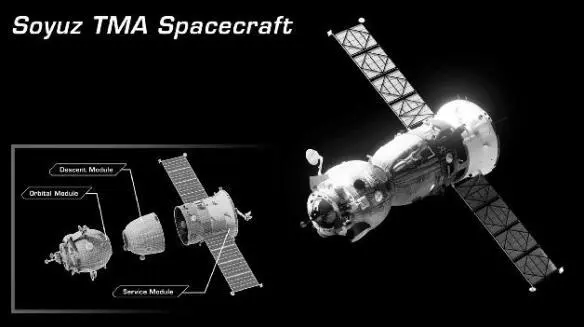
Soyuz rendering showing the three sections of the spacecraft: orbital module, descent module, service module. Credit 2 ILLUSTRATION CREDITS Nathan Koga 1, 2, 5, 6, 7, and 8: NASA; 3 and 4: NASA/Scott Kelly Illustrations NASA 9 and 10; Scott Kelly 11 and 12, U.S. Navy 13; NASA 14; NASA 15 and 16; NASA 17 and 18; NASA 19 and 20; NASA 21 and 22; Scott Kelly 23, Stephanie Stoll/NASA 24, NASA 25; NASA/Bill Ingalls 26, NASA 27; NASA 28, NASA/Bill Ingalls 29; NASA/Bill Ingalls 30, NASA 31; NASA 32, NASA/Bill Ingalls 33; NASA/Bill Ingalls 34 and 35; NASA/Bill Ingalls 36, NASA 37; NASA 38 and 39; Scott Kelly/NASA 40, NASA 41; NASA 42, NASA/Scott Kelly 43; NASA 44, NASA/Scott Kelly 45; NASA/Scott Kelly 46, NASA 47; NASA/Scott Kelly 48 and 49; NASA/Scott Kelly 50 and 51; NASA/Bill Ingalls 52 and 53; NASA/Bill Ingalls 54; NASA 55
When it’s time for the docking probe to deploy, nothing happens. We wait. Gennady says something to Russian mission control in rapid-fire Russian. They respond, sounding annoyed, then garble into static. We are not sure if they heard us. We are still a long way from ISS.
Читать дальше
